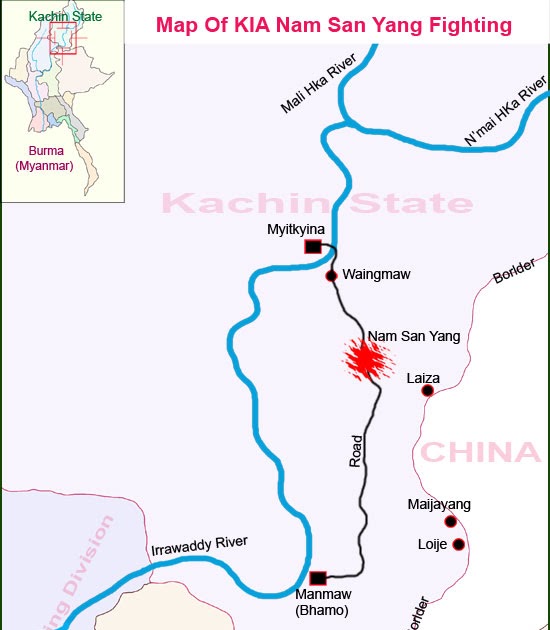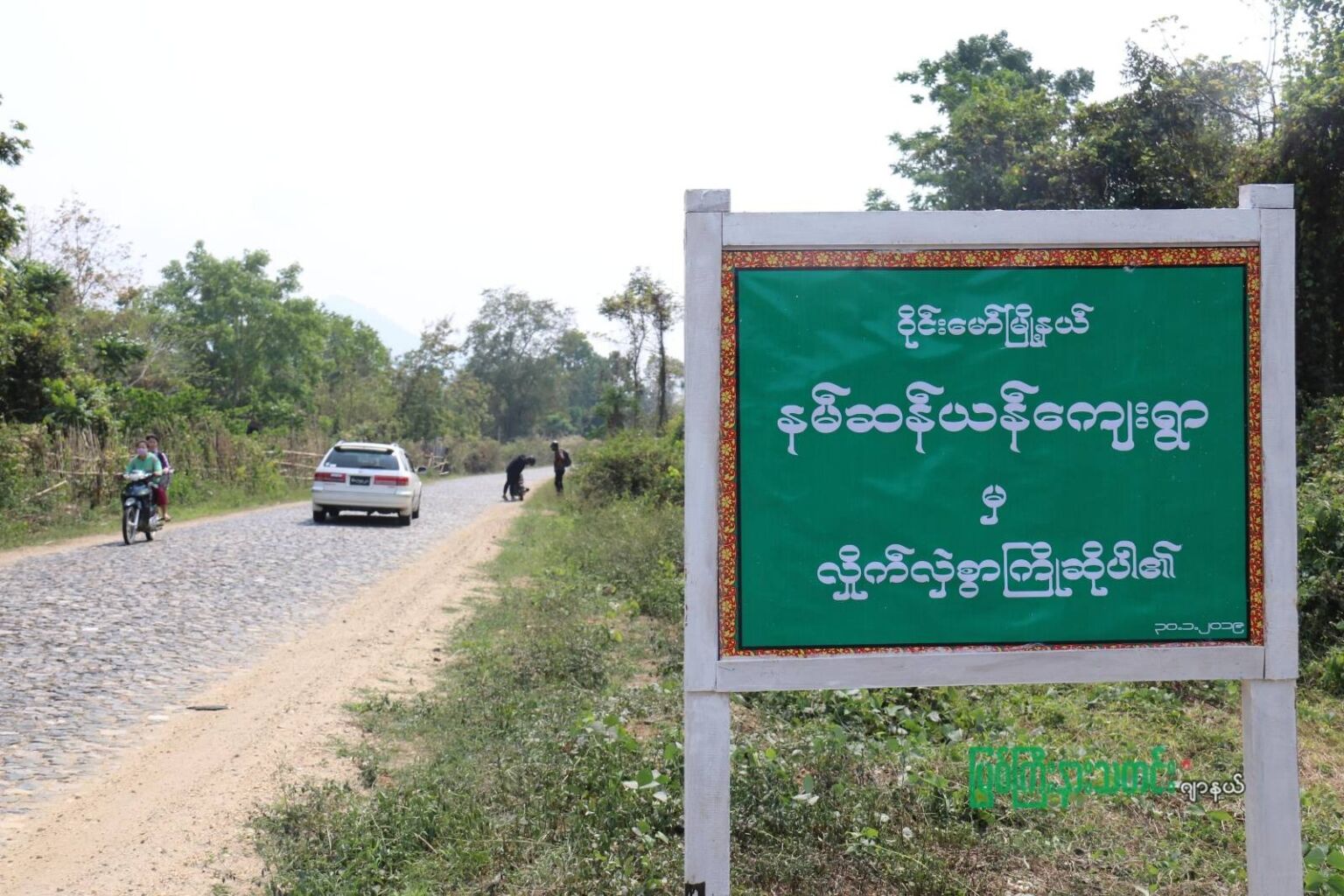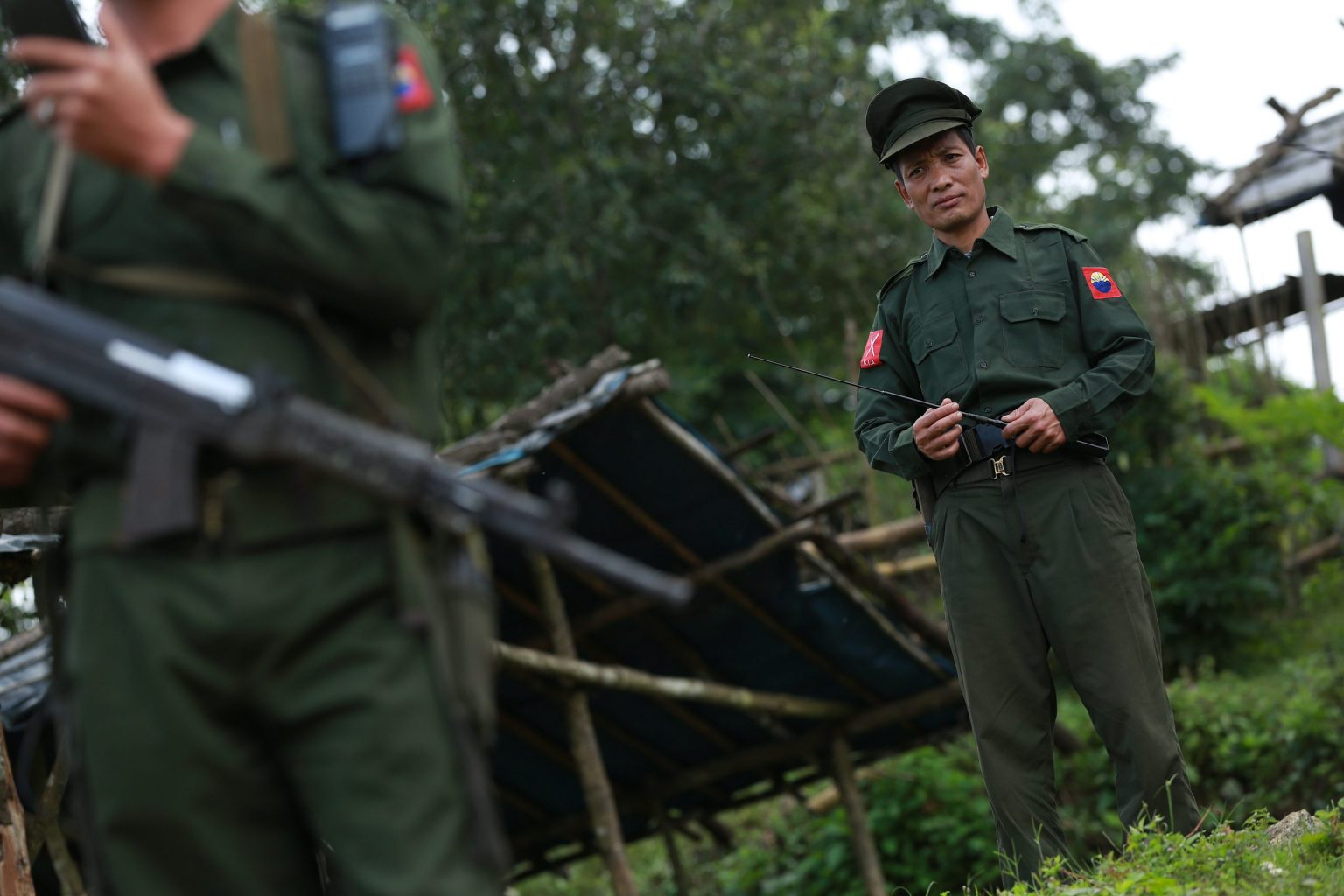It has been three months since the fighting broke out between junta troops and the Kachin Independence Army (KIA) near KIA headquarters at Laiza in northern Myanmar’s Kachin State.
Some 10 junta battalions under Northern Command are involved in the conflict, which erupted in Nam San Yang village, Waingmaw Township.
The fighting broke out after the military launched assaults on Nam San Yang, just 30 kilometers northwest of Laiza. The KIA side consists of troops from Brigades 3 and 5, and headquarters.
The Kachin ethnic armed group did not defend from a fixed position but responded by ambushing junta troops marching in two directions from Kachin State’s capital of Myitkyina and Waingmaw as well as from Bhamo and Myothit. Civilians have not been able to use the Myitkyina-Bhamo road for months.
The regime assembled the 10 battalions from military units across Kachin State, which has left troop shortages in other parts of Kachin State. The KIA has exploited the situation by attacking areas where gaps have been left.
September, the third month of the battle, has seen at least 12 clashes in Katha, Waingmaw, and Tanai and on roads leading to Nam San Yang. The KIA has seized and occupied several junta outposts, inflicting heavy casualties on regime troops who have responded by calling in airstrikes.
Assessment of Nam San Yang fighting
The regime’s depleted military is no longer able to deploy large numbers of troops in Nam San Yang. Its Northern Command can currently boast no more than 70 battalions of infantry and light infantry.
During previous conflicts with the KIA in 2017 and 2018, it was able to muster over 100 battalions from other parts of the country to fight in Kachin. But the troops are now tied up in a multi-front conflict that has raged nationwide following the 2021 coup.
So, why has the regime persisted in this battle for over three months despite making no real progress toward Laiza? Nam San Yang and Laiza had previously been fairly calm since the battle of Alaw Bum in March 2021.
The KIA is cooperating with the parallel civilian National Unity Government (NUG) in its push to oust the junta. It has been arming People’s Defense Forces (PDFs) in central Myanmar and conducting military operations with them. It also harbors many civil servants who joined the Civil Disobedience Movement (CDM) against military rule.

The regime is now hoping to distract the KIA by barking at its front door, so to speak. The junta appears to have calculated that it can prolong the fighting and eventually gain the upper hand thanks to advantages in military expenditure and ammunition.
However, that calculation has proven to be wrong. The KIA has not just waited for junta forces to arrive and attack them. Instead, they have responded by ambushing enemy troops, raiding their outposts, and attacking their hollowed-out rear.
KIA forces have exploited their knowledge of local terrain to surprise junta troops and seize outposts near Nam San Yang.
The regime has meanwhile failed to concede that the KIA has sufficient forces and weaponry to repulse its ground attacks.
Instead, it has responded by deploying air power in the battle. However, its scope for attacks is limited by the fact that Laiza is on the border with China. Only in emergencies can the regime airlift small amounts of troops, food and ammunition as reinforcements. Its capacity to conduct significant airborne operations is almost nil.
The normal air route for supplies of food and weapons – by plane to Bhamo then helicopter to Nam San Yang – is no longer viable for the depleted regime.

The Mandalay-Myitkyina railway is also out of service.
The only supply route left is the Ayeyarwady River – where junta flotillas are frequently attacked by resistance forces.
The KIA has also taken advantage of the vacuum that has appeared in regime battalions elsewhere in Kachin State, seizing outposts in Hpakant in August and along the road to Sumprabum this month.
Junta military leadership in northern Myanmar has been unstable during the battle of Nam San Yang, with punishment handed down to division and battalion commanders and transfers for Bureau of Special Operations chiefs. The turmoil offers more evidence of a decline in the military’s combat capability.
But discipline within the ranks persists, with many junta soldiers still obeying orders to fight. The military also maintains an air and artillery advantage over resistance forces. Moreover, it has shown no hesitation in killing civilians during the battle.

Casualty numbers for the Nam San Yang battle this month are difficult to calculate. The KIA has gained the upper hand in most clashes, except for fighting in Hpakant’s Hong Par village on September 11, when five KIA members were killed and their weapons seized in a joint attack by junta troops and the allied Shanni Nationalities Army.
While the junta is counting on victory by fighting a long and grinding battle against the KIA, its troops are growing combat weary. Fervor and morale in the ranks are being sapped by heavy casualties and difficult conditions, as Nam San Yang exposes the regime’s military weak point.
(Moe Set Nyein Chan is a military analyst)

















